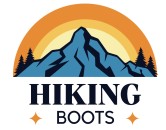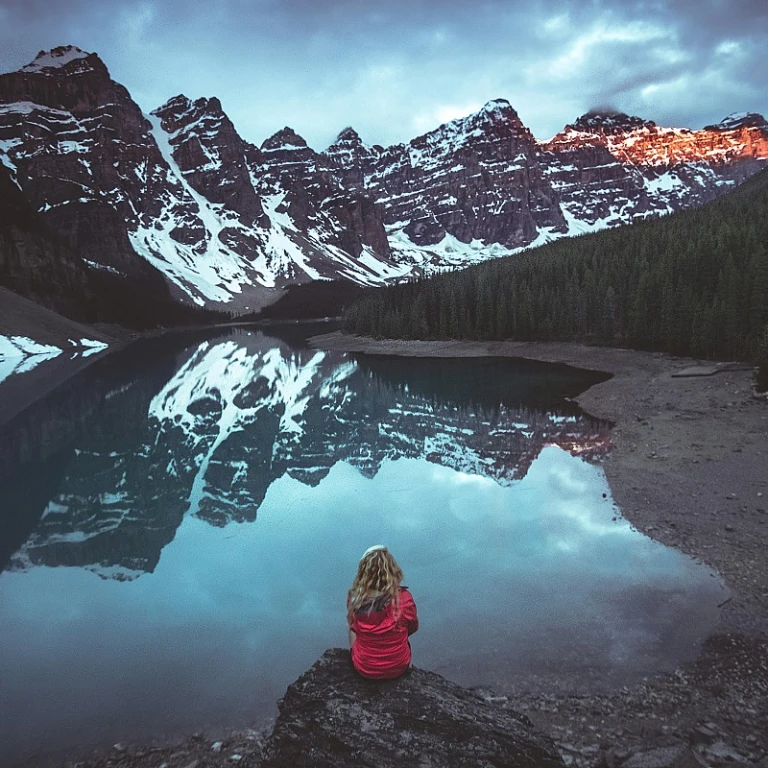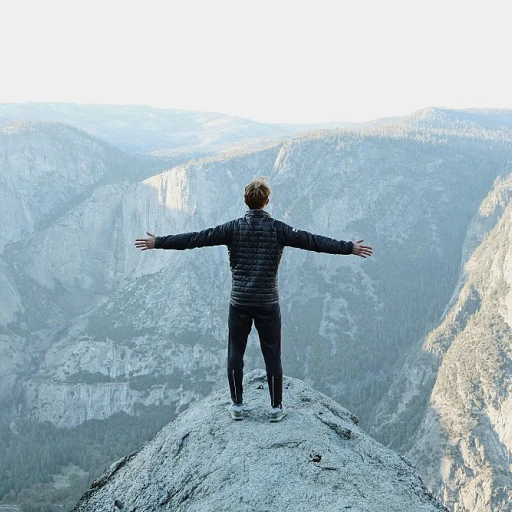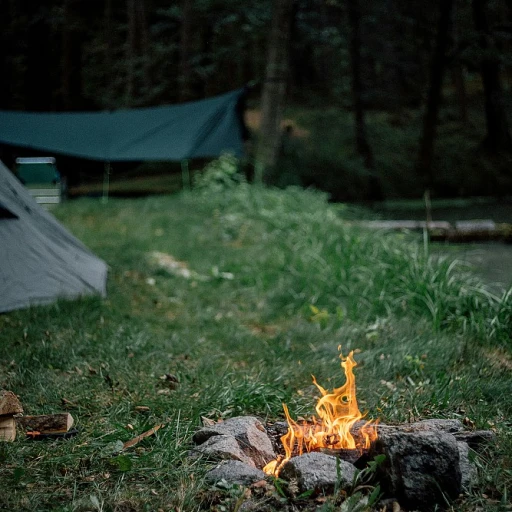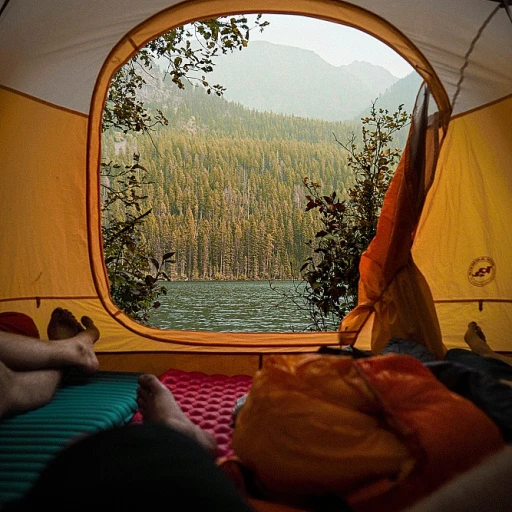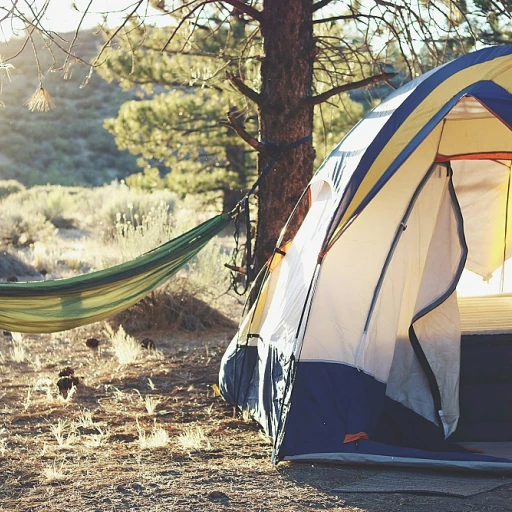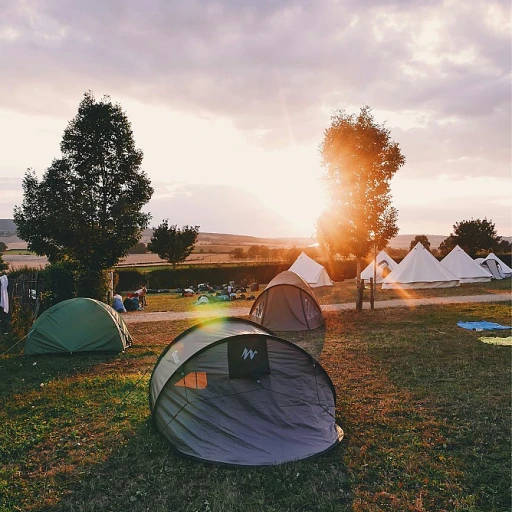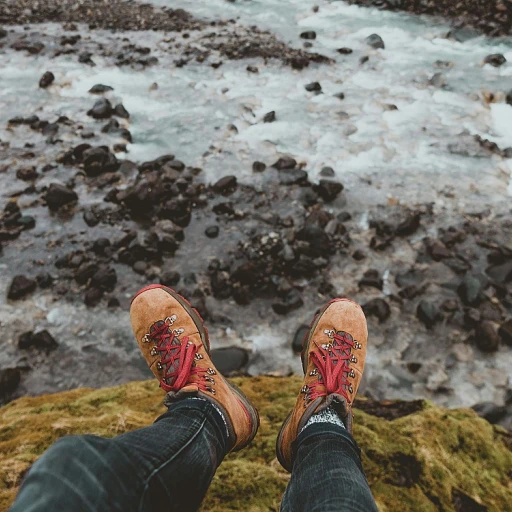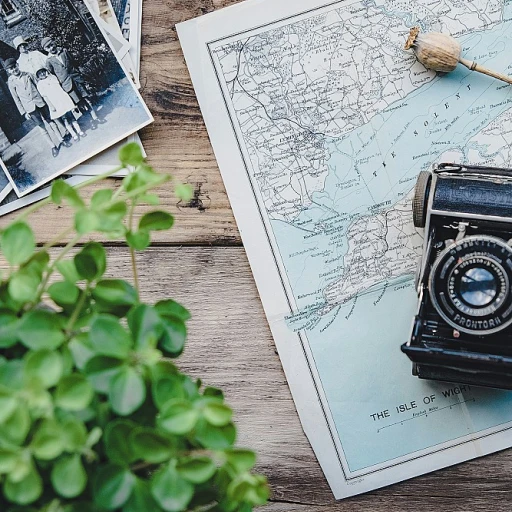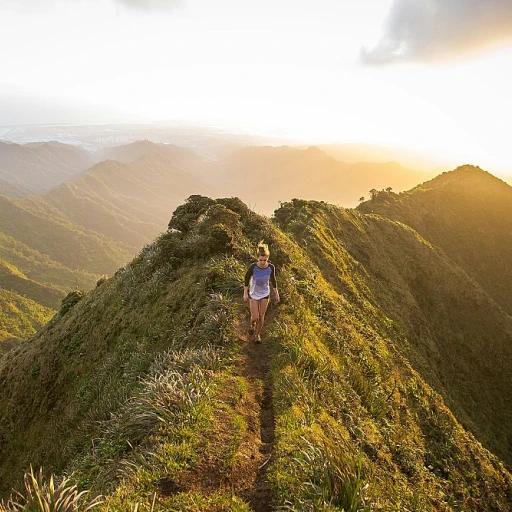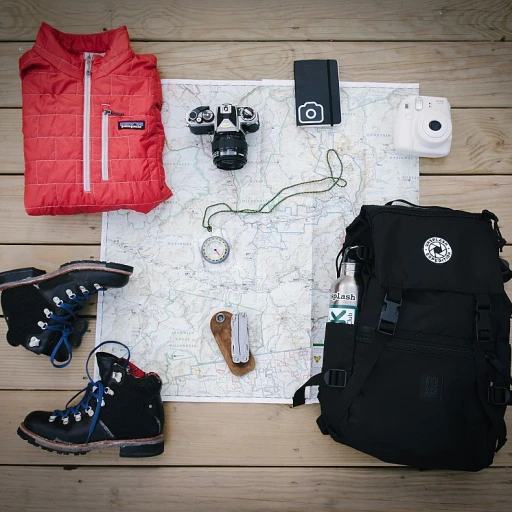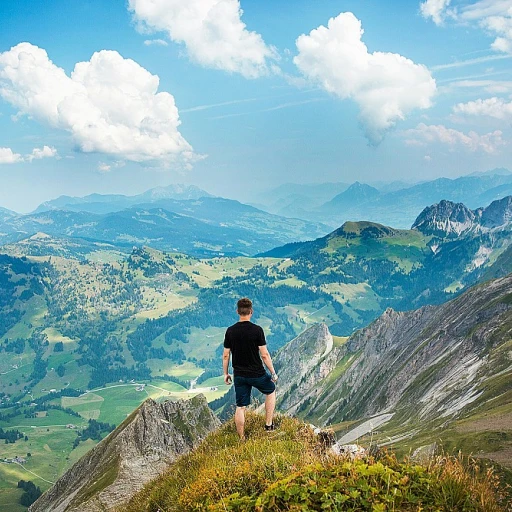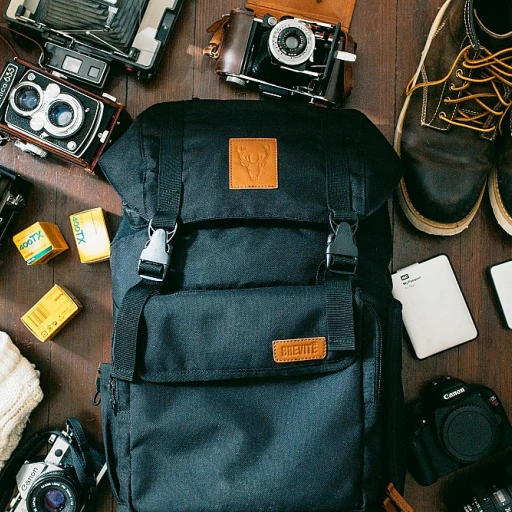Understanding the Basics of a Hiking Outfit
The Essentials: Crafting Your Perfect Trail Ensemble
Choosing the right hiking outfit can make or break your adventure. When I first started my hiking journey, I underestimated how much thought should go into each piece of gear. But with experience, I’ve come to appreciate how every part of your outfit plays a role. Pants or Shorts? For women, this choice might hinge on the weather and terrain. In summer, lightweight breathable shorts can feel freeing, letting your legs breathe as you ascend sun-baked trails. Yet, when dealing with rocky paths or more unpredictable climates, a reliable pair of long hiking pants offers added protection. Both options can be found in high-performance brands like Patagonia and Arc’teryx, known for their durable and moisture-wicking fabrics. What to Wear Up Top Layers are your best friends. On the hotter days, a lightweight crop top or a moisture-wicking sports bra keeps you cool and comfortable. I always carry a long-sleeve merino wool layer in my pack for those early morning chill or late afternoon winds. Pair this with a top-tier rain jacket to ensure you're prepared for any weather hiccup. On Your Feet Your boots are the bedrock of your hiking outfit. It's crucial to pick the best hiking boots that suit your arch and stride. Personally, I've found Hoka boots to offer the perfect balance of comfort and support on diverse terrains. It's worth checking out the benefits of Hoka hiking boots to discover what fits your style. In the end, crafting the perfect hiking outfit goes beyond just grabbing what's available. It is about customizing your gear to meet your comfort and environmental needs. This way, every hiking experience becomes one to remember for all the right reasons.Adapting Your Hiking Gear to Different Terrains
Gear Up for Every Trail
When you're out hiking, the terrain can change as quickly as the weather. Whether you're tackling rocky paths or grassy meadows, your hiking gear needs to be as versatile as the trails you love. A good starting point is to consider the reliable Merrell hiking boot, known for its durability and comfort across various surfaces.
From Forest Floors to Mountain Peaks
Let's talk about the essentials. For forest hikes, lightweight breathable fabrics are your best friends. Think moisture-wicking tops and hiking pants that keep you cool and dry. In contrast, mountain trails might require more robust hiking boots and a sturdy rain jacket to handle unpredictable weather.
Choosing the Right Clothing
When it comes to clothing, layering is key. Start with a moisture-wicking base layer like a merino wool top, which is perfect for regulating body temperature. Add a long sleeve shirt for sun protection, and top it off with a jacket if the weather looks iffy. In summer hiking conditions, shorts or lightweight hiking pants will keep you comfortable.
Footwear: The Foundation of Your Hiking Outfit
Your choice of footwear can make or break your hike. Hiking shoes or boots should offer good support and grip. Women hiking often prefer styles that provide a snug fit without sacrificing comfort. Don't forget to wear hiking socks made from materials like merino wool to prevent blisters and keep your feet dry.
Weather-Proof Your Gear
Weather can be unpredictable, so it's wise to prepare for anything. A rain jacket is essential for wet conditions, while a lightweight, breathable jacket is great for windy days. In summer, a sports bra and crop tops can keep you cool, while a sun hat provides necessary sun protection.
Practicality Meets Style
Hiking outfits don't have to be boring. Brands like Patagonia and Arc'teryx offer stylish yet functional options. Whether you're in the market for hiking pants or a new top, look for gear that combines practicality with style. Remember, the best hiking clothes are those that make you feel confident and comfortable on the trail.
Weather Considerations for Hiking Apparel
Dress Right for Weather
The great outdoors can be unpredictable, and that's why your hiking gear needs to flex with the weather. Think moisture-wicking fabrics for those sweaty summer hikes. A lightweight breathable top or crop top paired with hiking shorts or pants will keep you comfortable and dry. Especially when you're tackling sunnier trails, consider adding a wide-brim hat and use hiking clothes that offer sun protection.Layering: The Key to Comfort
Wearing layers is like having your own portable thermostat. Start with a moisture-wicking base layer, maybe something in merino wool for its superior breathability and odor resistance. A long sleeve shirt can be a lifesaver if temperatures drop or when you're hitting higher elevations. You can then pull on a lightweight rain jacket when the skies open up. Patagonia and Arc'teryx offer some of the best options out there.When the Weather Shifts
For those unexpected downpours, a compact rain jacket tucked in your bag can save the day. Not just any jacket though; you'll want one that's waterproof yet breathable, ensuring you stay dry without feeling like you're in a sauna. Summer hiking brings its own set of challenges, so consider packing a spare layer or two to adjust as needed.Considerations for Women Hikers
Ladies, your hiking outfit should be both practical and comfortable. Look for hiking pants with a bit of stretch—they're your best friends on the trail. When venturing in cooler weather, a sports bra made from moisture-wicking material is excellent for keeping sweat away. Don't forget the importance of a well-fitted hiking top and breathable jacket for added comfort. Always remember, the key to having the best hiking experience is preparation. Dressing according to the weather not only ensures safety but also enhances your overall hiking enjoyment. Whether you are on a sunlit trail or facing a sudden drizzle, being equipped with the right hiking gear is vital. For more tips on essential hiking gear, you may want to explore how Gazelle tents can provide a comfortable refuge during multi-day treks.The Importance of Footwear in Hiking
Choosing the Right Footwear
Lace up, because when your feet feel good, everything just falls into place. Your shoes can make or break any adventure out on the trail, and let's face it, no one wants blisters holding them back. Start thinking about the terrain you're tackling and match your hiking boots accordingly. Whether you're stomping up and down mountains or strolling through a quiet wooded path, there's a boot out there that'll fit just right. Invest in the best, such as Patagonia or Arc'teryx for trail-tested gear with staying power. Think about the seasons. For summer hiking, lightweight socks combined with breathable, moisture-wicking shoes are a must to keep you fresh when the sun is blazing.Footwear Fit and Function
Comfort is king! If your boots aren't cradling your foot like a second skin, you're in trouble. Go for models with good ankle support and experiment with water-resistant options for unpredictable rain. Gear up with hiking shoes that don’t just fit—they work in sync with your movement. Layering helps, even for your feet. Long hikes may require changing into thicker socks when temperatures dip into the chill zone, or unearthing shoes with merino wool lining for that cozy fainting warmth. Remember to think about weight. Lighter boots for those quick hops, rugged styles for extended journeys. Don’t skimp on quality either. Your feet will thank you later.Keep Safety in Step
Protecting those toes shouldn't be an afterthought. Make sure your boots offer grip and traction with rubber soles that laugh in the face of slippery conditions. Women often prefer hiking boots designed with a narrower fit and good cushioning to keep things comfy. Look for features like reinforced toe caps to shield against unexpected knocks from roots or rocks. Don't forget: If you're expecting showers, prep with a reliable rain jacket and a sturdy pair of waterproof boots to keep everything dry. Experienced hikers know that peace of mind on the trail starts with gear that covers all the bases. So go, adventure! Your feet are ready for the ride.Accessorizing for Functionality and Safety
Packing Essentials: Beyond the Backpack
Swapping out a hoodie for a lightweight rain jacket can save your skin when you're hiking through unpredictable weather. Patagonia and Arc'teryx are a couple of names that pop up when you're looking at weather-friendly rain jackets. Why? Because they stand tough against the rain while keeping you free from overheating. Whether you're in women hiking clothes or decked out in some rugged layers, every outfit finds its place on the trail with a rain jacket tucked inside your gear.Sun Protection: Your Trail Partner
If you're all about summer hiking, short sleeves and crop tops are great, but never step out without proper sun protection. Trust me, sunburns aren't the best buddy to bring along. Consider throwing on a long-sleeve shirt or convertible pants. The protection factor from quality hiking gear is as important as the paths you tread.Functional Clothing: The Key to Freedom
Moisture-wicking fabrics make summer hiking a breeze. Merino wool, praised in countless reviews, does wonders for keeping sweat away and reducing odor. Imagine hiking through the day feeling fresh. Pair a light sports bra or breathable shorts with these to find comfort as you stride.Footwear First: Protecting Your Most Important Asset
Hiking boots, shoes, and even certain pairs of socks are more than just footwear—they're lifesavers. From rugged terrains to leisurely paths, the right hiking boots anchor your hiking outfit to the trail. Sure, the best summer hiking boots can make your day all the more enjoyable, but what's non-negotiable is their fit. Trust in brands that tirelessly develop hiking gear that prioritizes foot health.Keeping It Green: Outdoor Adventure with a Conscience
Planet-friendly alternatives in hiking clothes are sprouting up like wildflowers. Brands are shifting towards sustainable materials, so look out for those options when picking your gear. It ain’t just about you—it’s about what you leave behind. Wear hiking gear that carries the earth’s weight lightly on its fabric, ensuring the trail remains as spectacular for tomorrow's explorers. On that hike, with the right layers and accessories, you'll find joy in the sweat, sun, and unexpected weather surprises. Gear up smartly and the trail, come rain or shine, will become your happy place.Sustainable and Eco-friendly Hiking Gear Choices
Going Green with Your Hiking Gear
When you're out on the trail, the last thing you want is to feel like you're leaving a mark on the beautiful environment you're exploring. That's why choosing sustainable and eco-friendly hiking gear is becoming more popular among outdoor enthusiasts. Not only does it help protect the natural world, but it also often results in high-quality, durable products.
Brands like Patagonia and Arc'teryx are leading the charge by offering hiking clothes and gear made from recycled materials. For instance, Patagonia's commitment to environmental responsibility is evident in their use of recycled polyester and organic cotton. This means you can wear hiking gear that’s not only stylish but also kind to the planet.
Eco-Friendly Fabrics
When selecting hiking outfits, consider materials like merino wool, which is naturally moisture-wicking and biodegradable. Merino wool is great for layering, keeping you warm in the cold and cool in the summer. It's perfect for long sleeve tops or lightweight breathable layers that adapt to changing weather conditions.
Footwear with a Conscience
Your choice of hiking boots or shoes is crucial, not just for comfort and safety, but also for sustainability. Look for brands that use eco-friendly materials and processes. Some hiking boots now feature soles made from recycled rubber, reducing waste while providing excellent grip on the trail.
Accessorizing Sustainably
From rain jackets to sun protection hats, there are eco-friendly options available. Opt for a rain jacket made from recycled materials, which offers the same protection without the environmental impact. When choosing accessories, think about their lifecycle and opt for products that are built to last.
Embracing sustainable hiking gear not only enhances your outdoor experience but also ensures that the trails remain pristine for future generations. By making informed choices, you can enjoy your adventures while contributing to a healthier planet.
